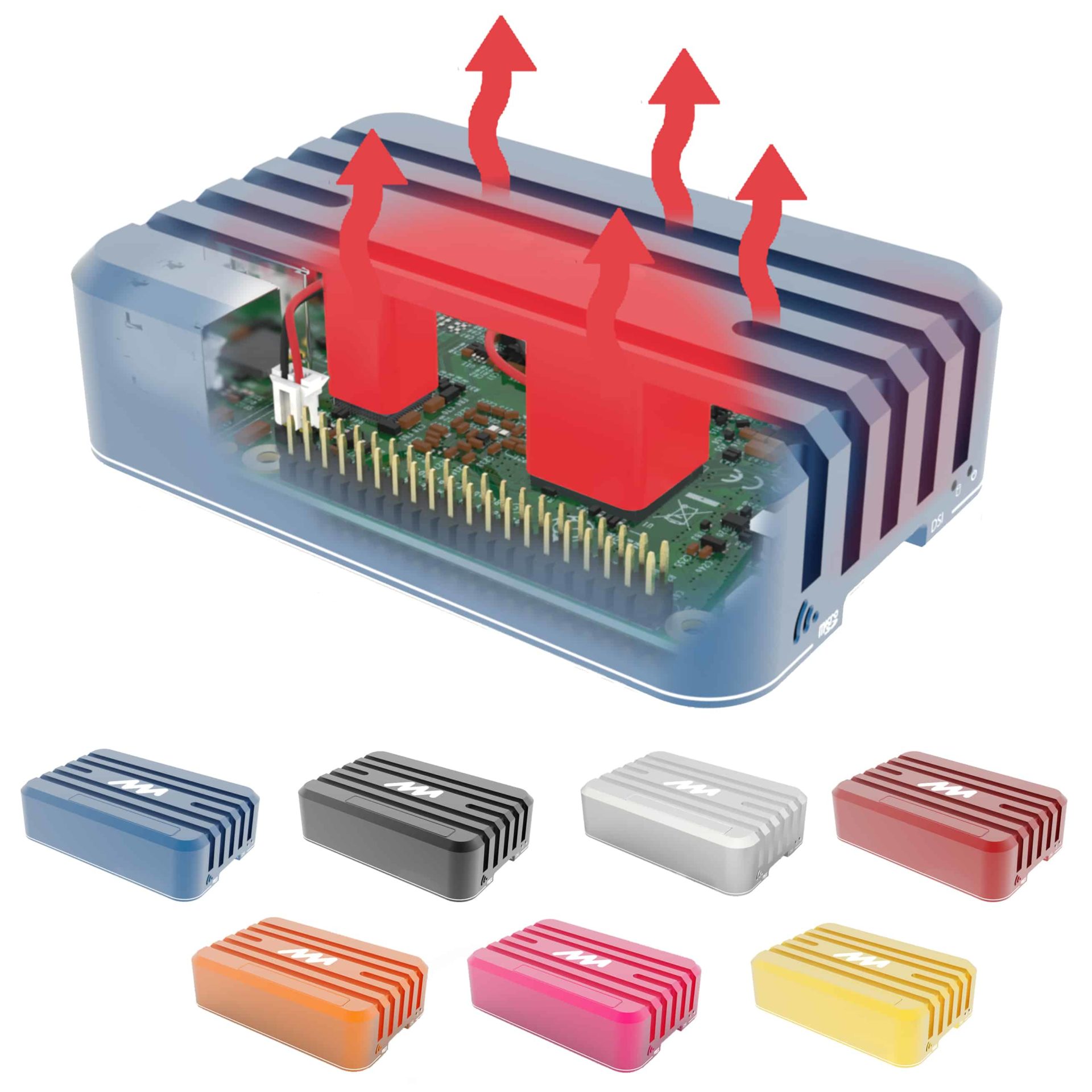Description
This Aluminum Raspberry Pi 3 Case from Mechatronics Art is a high quality, small form factor aluminum case designed for performance and comfort. The case cools down the Raspberry Pi 3 CPU and USB chip thanks to its aluminum construction and thermal pads. The case is acting as a passive heat sink that improves the single board computer performances.
The Case is equipped with an aluminum reset button and has easy SD card access. It has embedded holes to mount the Raspberry Pi camera on the back. The case also gives complete access to the connectors on the board: a cap on the top of the case can be set opened or closed to give access to the GPIO ports, and it also have specific openings for the CSI and DSI connectors.
This product comes in various colors: Gunmetal Grey, Ocean Blue, Strong Red, Midnght Black, Raspberry Pink, Juicy Orange. Just pick the one you love best!
The kit comes with hardware required for installation: thermal pads, bottom rubber pads, installation screws, Hex key, camera mounting screws and assembly guide!
Features
- Material: High quality aluminum alloy anodized, engraved;
- Color: according to selected option (Ocean Blue, Strong Red, Midnight Black, Gunmetal Grey, Raspberry Pink, Juicy Orange);
- Aluminum reset button;
- GPIO access;
- DSI and CSI port access;
- Camera fixation holes.
Part List
- 1x Aluminum case;
- 2x Thermal pads + 2 spare thermal pads;
- 1x Thermal paste syringe (For Raspberry pi 3 B+ CPU);
- 4x Rubber feet;
- 4x Screws for case and 2x screws for camera (camera not included);
- 1x Hex key;
- 1x Reset button pin header;
- 1x Assembly guide.
Compatibility
- Raspberry Pi 3 B+;
- Raspberry Pi 3 B;
- Raspberry Pi 2.





